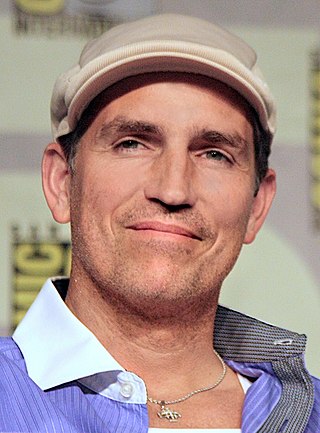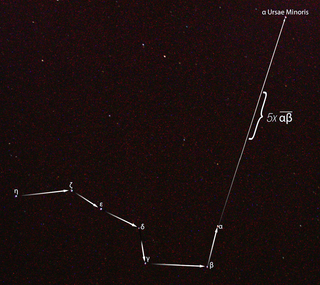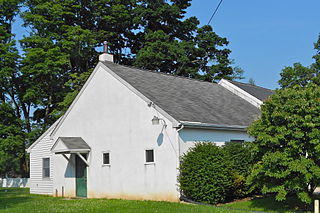Mark Mabry | |
|---|---|
| Nationality | American |
| Education | Brooks Institute Arizona State University |
| Occupation(s) | Photographer; writer; cinematographer; activist |
| Known for | The Abolitionists; Man in the Moon (event) |
Mark Mabry is an American photographer, [1] cinematographer, [2] and activist, [3] best known for his photographic depictions of Jesus, his work with political commentator Glenn Beck and his anti-slavery activism. [4]
In 2008 and 2009 Mark published two Reflections of Christ photo books recreating scenes from the life of Jesus. [1] During that time he was also featured in two short documentaries by producer Cameron Trejo, based on those photo shoots. [5] The photos have been in an exhibit that has toured the U.S. and Canada. [6]
Mabry was hired to work with Beck in 2012 as creative director of Mercury Radio Arts. [7]
In 2014 Mark became involved with Operation Underground Railroad (O.U.R.), an organization rescuing children from sex traffickers. [1] He appeared in the 2016 documentary, The Abolitionists , a film following the sting operations of O.U.R. [4] and in 2018 was a cinematographer for "Operation Toussaint", another film about modern day slavery. [8]
Mabry produces and co-hosts "Slave Stealers", a podcast about human trafficking which has featured guests like former Mexican president Vicente Fox, Montel Williams, Marisol Nichols, and Beck. [3] He also hosts and produces the "Gifted and Lifted Podcast", a show featuring "high achievers" who credit their belief in God with their success. [9]

Abolitionism, or the abolitionist movement, is the movement to end slavery and liberate enslaved individuals around the world.

The Fugitive Slave Act or Fugitive Slave Law was a law passed by the 31st United States Congress on September 18, 1850, as part of the Compromise of 1850 between Southern interests in slavery and Northern Free-Soilers.

Slavery in Canada includes historical practices of enslavement practised by both the First Nations until the latter half of the 19th century, and by colonists during the period of European colonization.

James Patrick Caviezel Jr. is an American actor. He played Jesus in The Passion of the Christ (2004), Tim Ballard in Sound of Freedom (2023), and starred as John Reese on the CBS series Person of Interest (2011–2016). He also played Slov in G.I. Jane (1997), Private Witt in The Thin Red Line (1998), Detective John Sullivan in Frequency (2000), Catch in Angel Eyes (2001), and Edmond Dantès in The Count of Monte Cristo (2002).

Christian views on slavery are varied regionally, historically and spiritually. Slavery in various forms has been a part of the social environment for much of Christianity's history, spanning well over eighteen centuries. Saint Augustine described slavery as being against God's intention and resulting from sin. In the eighteenth century the abolition movement took shape among Christians across the globe.

Rev. Jermain Wesley Loguen, born Jarm Logue, in slavery, was an African-American abolitionist and bishop of the African Methodist Episcopal Zion Church, and an author of a slave narrative.

Songs of the Underground Railroad were spiritual and work songs used during the early-to-mid 19th century in the United States to encourage and convey coded information to escaping slaves as they moved along the various Underground Railroad routes. As it was illegal in most slave states to teach slaves to read or write, songs were used to communicate messages and directions about when, where, and how to escape, and warned of dangers and obstacles along the route.

The pre-American Civil War practice of kidnapping into slavery in the United States occurred in both free and slave states, and both fugitive slaves and free negroes were transported to slave markets and sold, often multiple times. There were also rewards for the return of fugitives. Three types of kidnapping methods were employed: physical abduction, inveiglement of free blacks, and apprehension of fugitives. The enslavement, or re-enslavement, of free blacks occurred for 85 years, from 1780 to 1865.

The Jerry Rescue occurred on October 1, 1851, and involved the public rescue of a fugitive slave who had been arrested the same day in Syracuse, New York, during the anti-slavery Liberty Party's state convention. The escaped slave was William Henry, a 40-year-old cooper from Missouri whose slave name was "Jerry."

Ercildoun, population about 100, is an unincorporated community in East Fallowfield Township, Chester County, Pennsylvania, United States. The hamlet was founded by Quakers and was an early center of the abolitionist movement. In 1985 the entire hamlet, including 31 properties, was listed as a historic district on the National Register of Historic Places. Of these properties two were vacant land, 14 were significant buildings, ten were contributing buildings, and five buildings, built in the 1950s, were non-contributing. The Lukens Pierce House, an octagon house listed separately on the U.S. National Register of Historic Places, is located about half a mile northwest of the hamlet. Ercildoun is one of about ten hamlets in the township, which has no cities or towns, but has 31 sites listed on the National Register. It is one of the larger hamlets, located near the center of the township, and historically among the best known. The city of Coatesville is about 3 miles north.

Nefarious: Merchant of Souls is a 2011 American documentary film about modern human trafficking, specifically sexual slavery. Presented from a Christian worldview, Nefarious covers human trafficking in the United States, Western and Eastern Europe, and Southeast Asia, alternating interviews with re-enactments. Victims of trafficking talk about having been the objects of physical abuse and attempted murder. Several former prostitutes talk about their conversion to Christianity, escape from sexual oppression, and subsequent education or marriage. The film ends with the assertion that only Jesus can completely heal people from the horrors of sexual slavery.

Not My Life is a 2011 American independent documentary film about human trafficking and contemporary slavery. The film was written, produced, and directed by Robert Bilheimer, who had been asked to make the film by Antonio Maria Costa, executive director of the United Nations Office on Drugs and Crime. Bilheimer planned Not My Life as the second installment in a trilogy, the first being A Closer Walk and the third being the unproduced Take Me Home. The title Not My Life came from a June 2009 interview with Molly Melching, founder of Tostan, who said that many people deny the reality of contemporary slavery because it is an uncomfortable truth, saying, "No, this is not my life."

The Abolitionists is a 2016 American documentary film directed by Darrin Fletcher and Chet Thomas about a sting mission orchestrated in Colombia by the organization Operation Underground Railroad jump team, led by former U.S. Homeland Security Special Agent Tim Ballard, countering child sex trafficking.

Human trafficking in New York is the illegal trade of human beings for the purposes of reproductive slavery, commercial sexual exploitation, and forced labor. It occurs in the state of New York and is widely recognized as a modern-day form of slavery. It includes, "the recruitment, transportation, transfer, harboring or receipt of persons by means of threat or use of force or other forms of coercion, of abduction, of fraud, of deception, of the abuse of power, or of a position of vulnerability or of the giving or receiving of payments or benefits to achieve the consent of a person having control over another person, for the purpose of exploitation. Exploitation shall include, at a minimum, the exploitation of the prostitution of others or other forms of sexual exploitation, forced labor services, slavery or practices similar to slavery, servitude or the removal of organs."

Operation Underground Railroad (O.U.R.) is a nonprofit United States–based anti-sex trafficking organization founded in 2013 by Tim Ballard. The organization has been criticized for its conduct during sting operations and has been accused of exaggerating claims regarding its work. There have been no actual verified rescues performed by the group, and the group's claims of rescues have misled donors and the public about what the group does. The group claims to have conducted multiple sting operations, some outside the United States, and donated technological and monetary resources to law-enforcement agencies that combat sex trafficking.

The Latter Day Saint movement has had varying and conflicting teachings on slavery. Early converts were initially from the Northern United States and opposed slavery, believing that their opposition was supported by Mormon scripture. After the church base moved to the slave state of Missouri and gained Southern converts, church leaders began to enslave people. New scriptures instructing Latter-Day Saints not to intervene in the lives of the enslaved people were revealed. A few enslavers joined the church, and when they moved to Nauvoo, Illinois, they illegally took their enslaved people with them, even though Illinois was a free state.

Timothy Ballard is the founder and former CEO of Operation Underground Railroad (O.U.R.), an anti–sex trafficking organization. Ballard was removed as CEO and forced to leave O.U.R. in 2023 amid accusations of sexual misconduct by multiple employees. Shortly afterward, five women filed a lawsuit against Ballard, accusing him of coercing them into sexual acts during his sting operations. Another lawsuit was then filed against Ballard by a married couple, accusing him of sexual assault and grooming. Utah Governor Spencer Cox subsequently called for a criminal investigation into Ballard's actions.

The New England Freedom Association was an organization founded by African Americans in Boston for the purpose of assisting fugitive slaves.